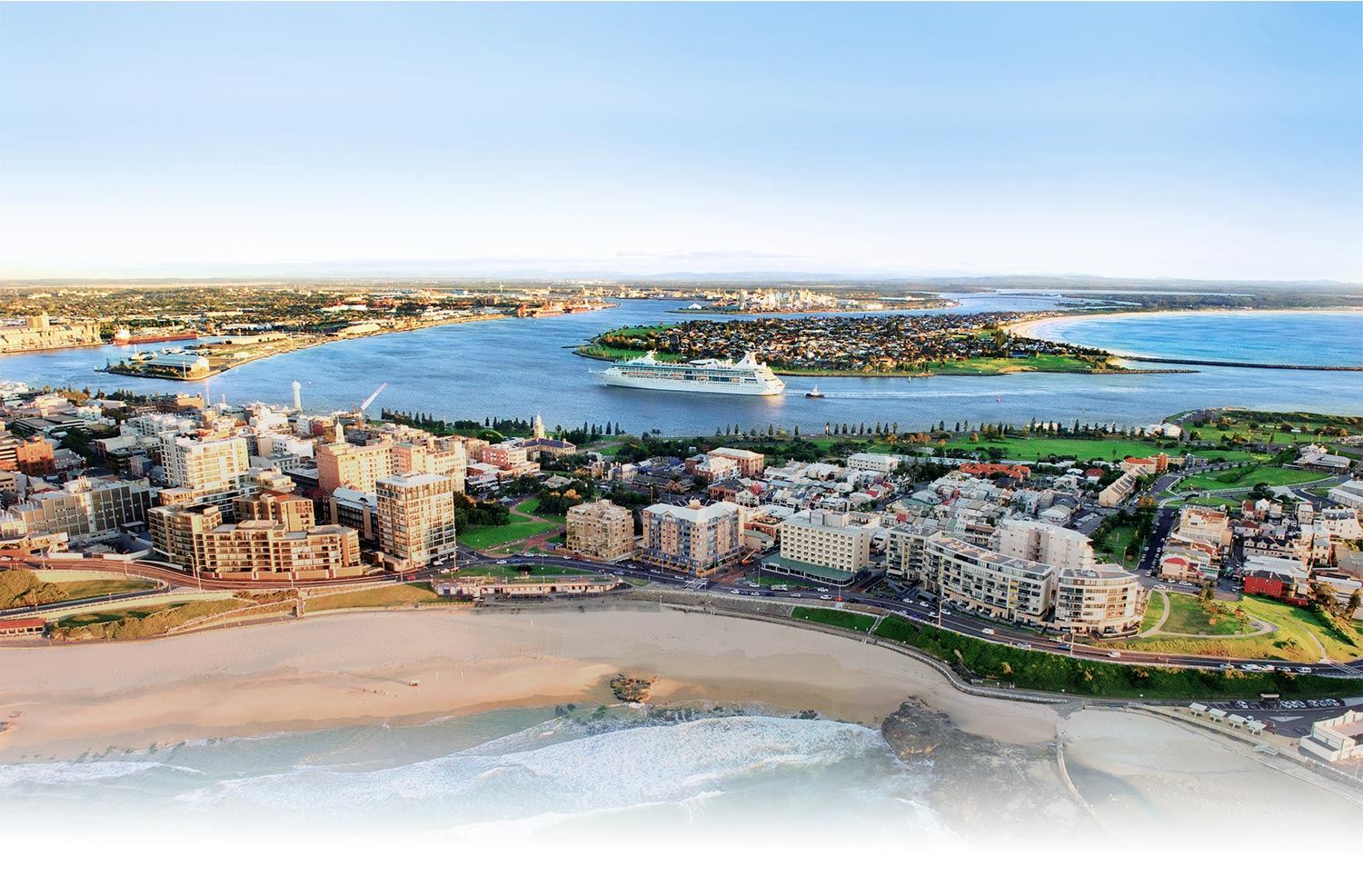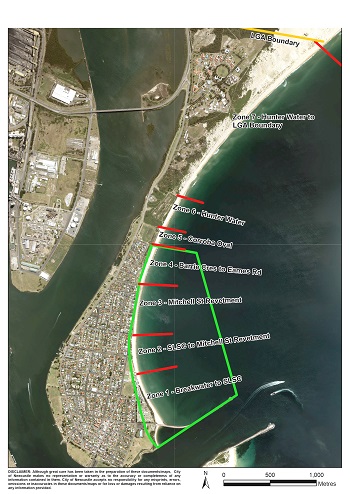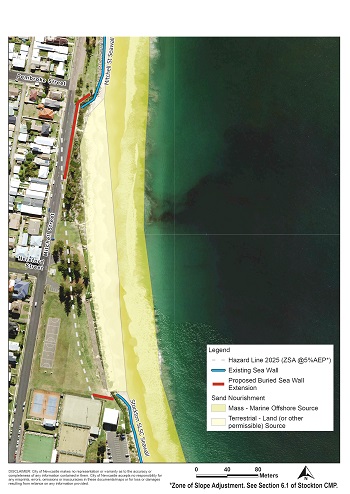
Our plan to save Stockton Beach is now on public exhibition
12 May 2020
Using offshore sand to save Stockton Beach will protect local homes and community land from the threat of coastal erosion as well as protect $2.5 million in public assets.
This is the finding of a cost benefit analysis undertaken as part of the Stockton Coastal Management Program (CMP), which concludes initial actions to address coastal erosion will cost $19 million over five years, in addition to the requirement for mass offshore sand nourishment which will take an estimated $21 million investment followed by $12 million in maintenance every decade.

Coastal engineers have recommended an initial mass marine sand nourishment campaign of 2.4 million cubic metres to restore the beach and protect coastal assets. It also identifies actions to take over the next 12 months to address immediate risks, while the NSW Deputy Premier’s Stockton Erosion Taskforce determines a legal pathway to secure the required volume of sand from approximately two kilometres offshore.
Research undertaken as part of the CMP has also found that 112,000 cubic metres of sand is being lost each year, far more than previously estimated.
Immediate actions include an initial sand nourishment program of 50,000 cubic metres from land-based (or other permissible) sources, while undertaking essential protection works to the ends of existing seawalls to address the imminent risk of losing both private property and community assets.
The draft Stockton Coastal Management Program is based on years of engagement with the local community, includes the latest expert engineering advice, and provides a way forward that has sand nourishment as the cornerstone of the program.
Newcastle Lord Mayor Nuatali Nelmes said the Stockton CMP struck a balance between the needs of a sandy beach for the community to enjoy, and protecting coastal assets and properties from erosion.
“The call for mass sand nourishment for both beach amenity and asset protection has been very clear, and through cost-benefit analysis we’ve confirmed this option stacks up with a $2.5 million return on investment,” the Lord Mayor said.
“We’re thankful the NSW Government and in particular the Deputy Premier has recognised the importance of this issue and has committed to using its many agencies to deliver a mechanism to get sand onto Stockton Beach.
“We are now at a critical point in delivering an outcome for Stockton which is why it’s so important for the community to have their say on the plan before it goes to the NSW Government at the end of June.”
Members of the Stockton Community Liaison Group (CLG), which was formed in 2018 and has met formally 21 times, stressed the importance of the public exhibition period.

Barbara Whitcher, Chair, Stockton Community Liaison Group, Stockton resident:
“It’s my hope that the Stockton CMP is considered by the broader community in context, that is City of Newcastle defining its preferred long-term management option while addressing what it can do now.
“Now is our chance to present a united front between the Stockton community and City of Newcastle so we can get the outcome we need,” Ms Whitcher said.
Simon Jones, President, Northside Boardriders, Stockton resident:
“I’m glad that the plan put forward is one which is focussed on returning the sandy beach that I enjoyed as a kid so as the next generation of Stockton can swim, surf, fish and make friends on the beach like we did.
“While the Stockton CLG represents a good cross-section of the community, it’s so important that the broader community takes advantage of this public exhibition period to have their say,” Mr Jones said.
Professor Ron Boyd, Professor Earth Sciences, Stockton resident:
“The Stockton CLG has been providing technical background for the local community and also giving plenty of feedback to City of Newcastle on issues that are important to Stockton.
“My hope is that the Stockton community can achieve some agreement through the public exhibition process so that we provide a consensus position to City of Newcastle and as a result, generate a strong Coastal Management Program submitted to the State Government,” Professor Boyd said.
Callan Nickerson, Stockton Surf Lifesaving Club President and CLG member:
“While it has been a sometimes-frustrating process, City of Newcastle has listened and recognised the importance of the beach to Stockton’s identity and the wellbeing of the community,” Mr Nickerson said.
Every coastal council in the State is currently preparing a CMP in line with the NSW Coastal Management Act 2016, with a deadline of December 2021.
City of Newcastle will become one of the first to submit a CMP at the end of June, in line with a direction from the Local Government Minister.
The Stockton CMP is on public exhibition until 10 June 2020.
You can view the draft Stockton CMP at www.newcastle.nsw.gov.au/stockton.
Key facts:
- The Stockton CMP area stretches from the northern harbour breakwall to Meredith Street.
- Sand lost from the Stockton CMP area is now estimated at 112,000 cubic metres per year, which is far more than previous estimates.
- The required volume of sand for mass nourishment for the Stockton CMP area is estimated to be between 1.8 and 4.5 million cubic metres initially, depending on the sand source, followed by maintenance campaigns every decade, making marine offshore sand the only viable source.
- Existing seawalls at Stockton will be repaired, while also being extended at each end with minimal buried structures to protect private and public assets from immediate risk.
Key figures:
- Delivering the initial 50,000 cubic metre sand nourishment from available land (or other permissible) sources, protection structures, and other seawall maintenance and associated work is expected to cost $9 million in the first year and a total of $19 million over five years.
- Mass offshore sand nourishment is expected to cost $21 million for an initial campaign followed by maintenance campaigns every 10 years at $12 million.











